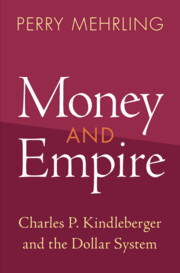Book contents
- Money and Empire
- Studies in New Economic Thinking
- Money and Empire
- Copyright page
- Dedication
- Contents
- Preface
- Introduction
- I Intellectual Formation, 1910–1948
- II International Economist, 1948–1976
- Chapter 5 Tech
- Chapter 6 The Dollar System
- Chapter 7 Among Economists
- III Historical Economist, 1976–2003
- Bibliography
- Index
Chapter 7 - Among Economists
from II - International Economist, 1948–1976
Published online by Cambridge University Press: 11 June 2022
- Money and Empire
- Studies in New Economic Thinking
- Money and Empire
- Copyright page
- Dedication
- Contents
- Preface
- Introduction
- I Intellectual Formation, 1910–1948
- II International Economist, 1948–1976
- Chapter 5 Tech
- Chapter 6 The Dollar System
- Chapter 7 Among Economists
- III Historical Economist, 1976–2003
- Bibliography
- Index
Summary
Because of continuing capital controls in the core countries during the immediate postwar period, the action in international monetary economics was initially mainly in the periphery, where the new IMF played a leading role. As the market system recovered, academic economics began to take an interest, with Robert Mundell (among others) working to extend the economists’ preferred macroeconomic modelling framework (the so-called IS–LM), to include the balance of payments. In time, the logical endpoint of these academic efforts was revival of the empirically discredited specie-flow model by Harry Johnson and others. Kindleberger’s practitioner wisdom resisted all these academic developments as distraction from real world financial developments.
Keywords
- Type
- Chapter
- Information
- Money and EmpireCharles P. Kindleberger and the Dollar System, pp. 156 - 184Publisher: Cambridge University PressPrint publication year: 2022

